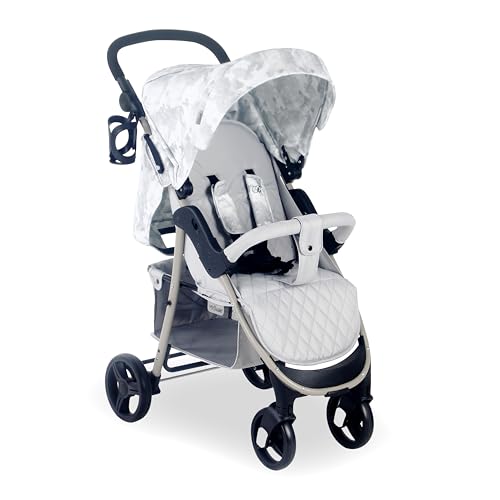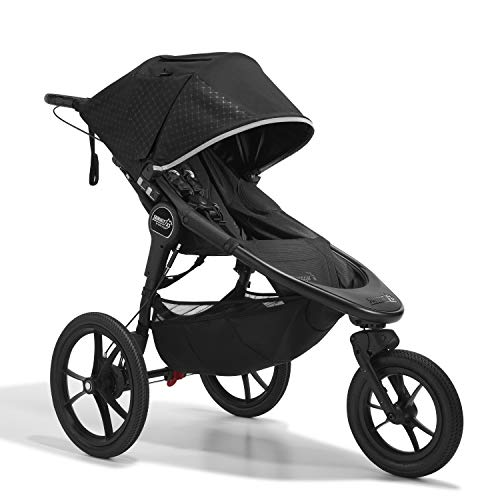9 . What Your Parents Teach You About Pushchairs From Birth
페이지 정보

본문
 Choosing Pushchairs For Your Baby
Choosing Pushchairs For Your BabyA stroller, buggy, or pushchair is a type of transportation for children who are young. Babies need to be laid flat, which is the reason prams come with a carry cot or bassinet and some also come with a frame that you can fix the cot to.
When a baby is able to exercise good head control and can sit up they can be seated in a pushchair with seats that face away towards or away from you. Many pushchairs have useful features like swivel wheel or enclosed carrycots, and can be used as three in one systems.
Rear-facing
When it comes to choosing a running pushchair for your brand new baby There are a lot of options to think about such as prams and pushchairs to buggies and strollers. They may sound similar but there are significant differences between them. A pram is generally designed to lie-flat while a pushchair offers a seated position. Some babies can be accommodated in both, but others require a carrycot until their heads and necks are strong enough to be supported in a seated position.
Most experts agree that it is ideal to use a pushchair with a parent's face for infants who are less than just a few months old. Babies love to look at their parents' faces and love the visual connection can be created. This eye contact is crucial for their emotional development, as they learn how to process stimuli around them. As they observe their parents interact with each other and interact with each other, they also begin to develop their language skills.
When babies are able to see their parents, it gives them a sense of security and confidence. They know they can rely on their parents to help their children navigate and protect them. This early trust can help build an infant's confidence and well-being as they develop into toddlers and begin to explore the world on their own.
A parent-facing pushchair allows you to easily monitor your child while they are in their seat. It's easy to make sure that they're comfortable and content, and also that their hat hasn't fallen over their eyes or the wind isn't blowing into their face. Babies who are able to see their parents are more likely to fall to sleep as they feel reassured by their familiar faces.
There are many options available for parents who would like to keep your baby in a pushchair with its parent for as long as is possible. Some pushchairs can be switched between forward-facing and parent-facing and some have an extendable footmuff to keep the cold out or a rain cover to shield your child from the elements. The Eezy S Twist+2 is a great example of a versatile pushchair that can switch from a parent-facing unit to an forward-facing unit with the flick of a lever. It can be equipped with a Cocoon S Car Seat, Cot S Carrycot or a carrycot for a 4-in-1 travel system.
Forward-facing
A pushchair that faces forward allows babies to explore and absorb the sights, sounds and smells of their surroundings. They also get to see their parents, which is very important for the social development of your baby. Around six months, depending on their developmental milestones and age the majority of babies are ready to transition from a newborn carrycot or pram to a pushchair that faces towards the forward. When they have enough neck and head control to to safely face forward, this is the right time.
Researchers have found that babies who are sitting with their parents in a pushchair facing forward are more likely speak back and exhibit a lower heart rate, which suggests that they are less stressed. They also are more interested in what's happening around them and their parents, which helps stimulate their minds and develop their language skills. Parents are more likely to talk to their baby if they can make eye-contact with them. This is reassuring and comforting for them.
There are numerous advantages having a pushchair that faces the front from birth, including being in a position to take longer walks. You can take your child shopping or take them to other activities that require walking. In addition, a stroller or pushchair gives your baby the opportunity to observe things that their older siblings are doing which is beneficial for helping them build confidence and self-esteem.
You should look for an infant stroller that comes with an array of accessories, including a pram blanket, footmuff and seat liner. When it's hot outside the hood and a parasol can help protect your baby. Select a parasol that has a rating of SPF or UV50+, and make sure it is designed to fit your stroller and is easy to attach. Some brands offer a variety of accessories. Some come in a set with the pushchair. Other items are available separately.
Many pushchairs are able to convert into double size by adding an additional seat unit or carrycot, which is particularly beneficial for families expecting another child shortly after the first. Some models come with everything you need for the conversion, while other models have a separate conversion kit.
All-terrain
For those who live up a country road, enjoy walking in the woods or spend much time hiking, you'll require a pushchair designed to withstand the rough roads and rutted fields. All-terrain strollers can handle any terrain. They are equipped with features like suspension that cushion bumpy rides to ensure your child won't get shaken up. The seat is designed to disperse the force of the rough terrain across your child's head and neck.
The majority of all-terrain strollers are three-wheelers with a front wheel which can be swiveled and locked into place to provide maximum maneuverability. This is crucial on rough surfaces. They will also have larger tires compared to your average cabin pushchair. This means that they can handle rougher paths and provide an easier ride for you child.
When looking for a all-terrain pushchair Another thing to consider is whether the wheels are foam or air filling. Air-filled tyres provide more comfort on rough terrain however, they also puncture more easily if you hit something sharp. Foam-filled tyres last longer and less likely to puncture, which is why this is a better option for an all-terrain pushchair.
Some strollers that are all-terrain can be converted from single to double mode for the growing family. Some can be used as travel systems, with car seat adaptors. They are perfect for new parents. Some models, such as the Out 'n' About Nipper are suitable for infants due to their sloping seats and the fact you can also use a cot that you carry with these models.
The Nipper also includes a variety of accessories for pushchairs from birth such as a raincover and a footmuff. It is easy to store since it folds down with just one hand, and it stands on its own when folded. It also comes with an adjustable 360-degree swivel front wheel and foam-filled, never-flat tyres, which mean you don't need to worry about punctures on your walks.
Weight
The best pushchair will affect your travel style and the comfort of your child. The right model will allow your child to grow and develop in a comfortable environment, it will allow you to take part in all of the family adventures that are yet to come. It's a significant investment, so be sure to check to make sure you select the model that will suit your lifestyle and budget.
The first step is understanding the distinction between a pram, pushchair and buggy, as well as the differences between a travel system and a single pushchair. This guide will help parents comprehend the jargon and decide the best option for their newborn baby.
As the name suggests it is designed for babies and newborns from 6 months to 6 years of age. It helps the baby's back to grow properly, by allowing them sleep flat. Some models come with a bassinet that can be used in the early months to provide your baby with an environment that is safe and comfortable for your baby.
However, you should be aware that not all pushchairs that claim they can lie flat actually can. Be wary of claims from manufacturers that their pushchairs can recline flat. Always look over the fine print to find out what it really means. Some pushchairs pushchairs can only offer the slightest amount of recline, which is better than a seat that is fully reclined.
When your baby can sit up on their own without assistance, it's the right time to put them in the pushchair. This usually happens at three to four months. However, some babies will start sitting up earlier. It is recommended to purchase a pushchair that is able to transform from a carrycot into an actual seat, so you have flexibility and ensure your baby's safety until they are ready for the next stage.
 A lightweight pushchair that has a single pedal brake is often preferred by parents, especially those who wish to be able to chat with their children or have their hands free to carry shopping bags. Jessica is our MFM home tester, gave this model an enthusiastic thumbs-up, stating that "it performs flawlessly, with a smooth ride and the one-handed fold is a delight". The lightweight model is equipped with Tru-Ride tyres that are tough, puncture-resistant and provide a high degree of performance.
A lightweight pushchair that has a single pedal brake is often preferred by parents, especially those who wish to be able to chat with their children or have their hands free to carry shopping bags. Jessica is our MFM home tester, gave this model an enthusiastic thumbs-up, stating that "it performs flawlessly, with a smooth ride and the one-handed fold is a delight". The lightweight model is equipped with Tru-Ride tyres that are tough, puncture-resistant and provide a high degree of performance.- 이전글You Are Responsible For An ADHD In Women Symptoms Budget? 12 Top Notch Ways To Spend Your Money 24.09.11
- 다음글Volkswagen Key Replacement Near Me Explained In Fewer Than 140 Characters 24.09.11
댓글목록
등록된 댓글이 없습니다.